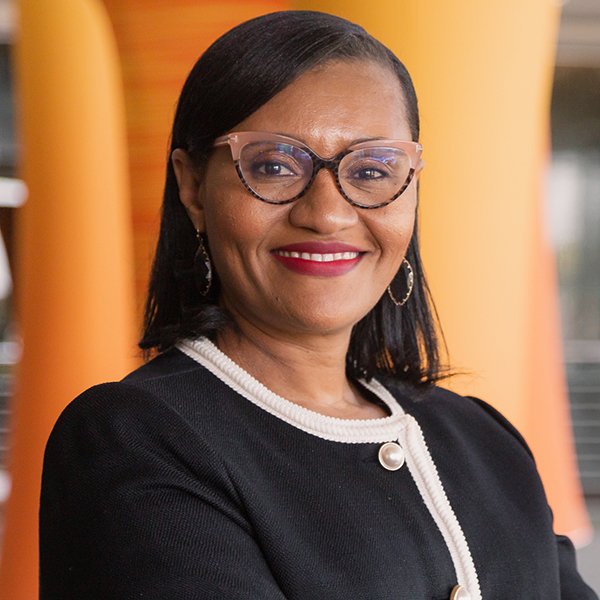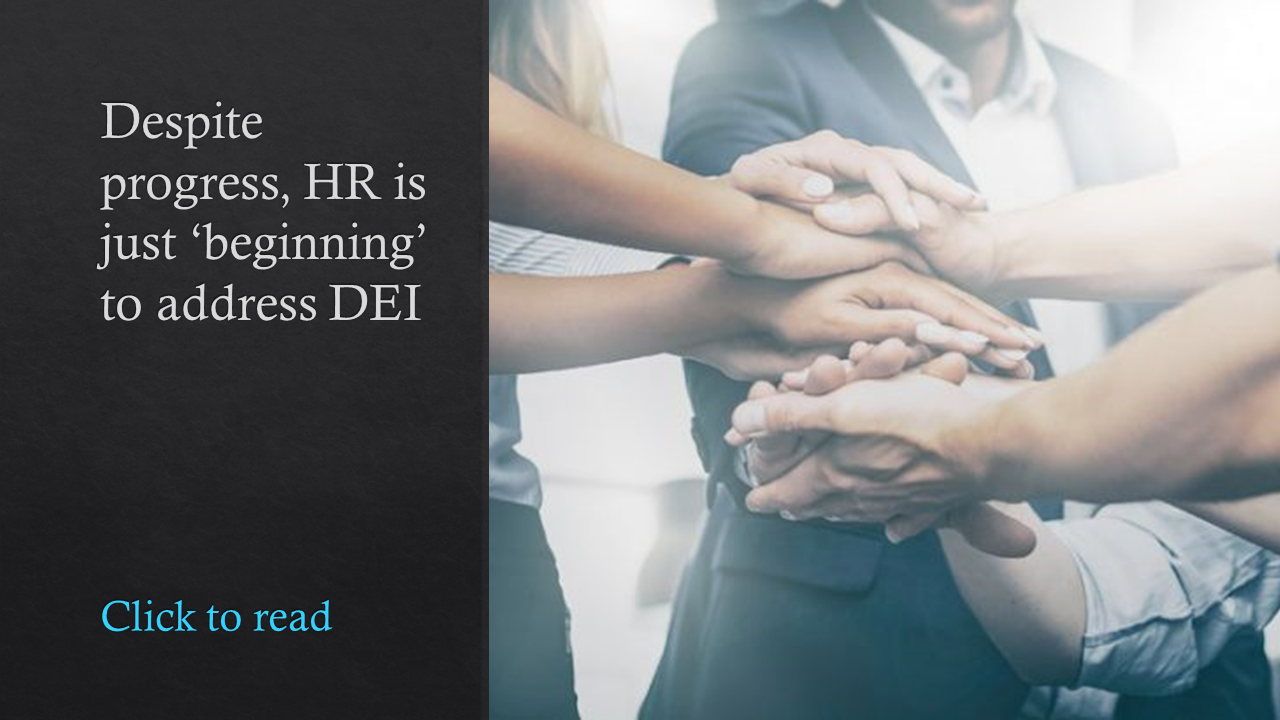Throughout her more than 20 years of experience in HR, Jonita Wilson has always had a passion for and deep understanding of the value of diversity, equity and inclusion in the workplace. In 2019, a few months after joining Discover Financial Services’ HR team, she formalized that work with a director of diversity position–which ultimately led to her being named chief diversity officer last summer, overseeing all DE&I initiatives for the workforce of more than 17,000.
Over the last year, the organization has made significant strides in its DE&I strategy–creating new company-wide training on the topic, setting aggressive goals for diverse representation, rolling out new expectations for executive accountability for DE&I, much of which has been fueled by a new Diversity and Inclusion Task Force.
Wilson says the organization is now looking to build upon the foundation the task force laid to drive long-lasting success.
“We will be working to ensure we’re continuing to bring everyone along in the journey and meeting everyone where they are, pacing ourselves through this work and making sure we’re building long-term, sustainable change,” she says.
Wilson recently shared with HRE the organization’s DE&I journey, as well as her own path into the chief diversity officer role.
HRE: What was the impetus behind the launch of the Diversity and Inclusion Task Force?

Wilson: The pandemic and the continued fight for racial justice really highlighted the importance of diversity, equity and inclusion. At Discover, we understand that DEI is a business imperative and an enabler to our success. So, while our DEI journey certainly didn’t begin last summer, we knew we needed to do more and accelerate the strengthening of our DEI strategic plan. Many of our employees felt a strong call to action and, as a company, we wanted to be sure we were holding ourselves accountable for having workplaces that truly embrace all the dimensions of diversity, have fair and equitable processes, and are inclusive. So, in June 2020, BOLD–our Black employee resource group–hosted a companywide “Crucial Conversation” that gave our senior leaders the opportunity to listen and learn, and this directly empowered our Black talent to safely share their lived experiences.
From that conversation, our CEO, Roger Hochschild, committed to standing up a DEI task force that I co-led with Wanji Walcott, our executive vice president, general counsel. The task force was comprised of 30-plus employees across-company, who came together to dedicate their time–on top of their regular jobs. Some key areas that we focused on that would drive systemic change were increasing diverse group representation, making an external impact and developing employees to be advocates for inclusion.
Read more Insights from a CHRO here.
HRE: What have been some of the primary accomplishments so far?
Wilson: I’m excited to say in a short amount of time we have accomplished quite a bit. One that really excites me is the creation of our internal Executive Committee Pledge. The purpose is to show that the collective community of executives is committed to advancing and being accountable for growth in the area of DEI. This commitment aligns with Discover’s belief that diverse perspectives and experiences make us stronger and better able to help our customers, employees and communities achieve brighter futures.
We also want to provide employees the ability to grow their own learning journey, so we developed a curated site of DEI tools and resources that we’re continuously adding to. Additionally, we kicked off our more formal training roadmap with a companywide lunch and learn; the online training is designed to help employees have a better understanding of what DEI means and how it might show up in the workplace. I’m happy to say that our online training has a 98% completion rate.
HRE: Discover has goals to increase representation by women and people of color among the leadership ranks in the coming years. How are you building that pipeline now?
Wilson: There are many levers that need to be pulled and work in concert with each other in order to really be effective at building the pipeline. For us, nothing is going untapped. We are providing diverse candidate slates, we’re focused on retention, ensuring we have an inclusive culture and also making sure we’re developing leaders to be more inclusive. We’re working to integrate and embed DEI into all talent processes: succession planning, talent review, development, year-end and mid-year performance-rating processes. To ensure we are advancing diverse groups across the organization and facilitating more inclusive cultures, we implemented a data-centric approach to hiring, retention and promotion.
Now, our goal is to increase representation of women leaders to 50% and minorities to 40% by 2025. It’s a multi-year journey, and this is something different from what was done in the past. Then, we also recognize the importance of leaders knowing that data, having the ability to make data-led decisions and leveraging data to hold themselves accountable. As a result, we’ve gotten more transparent with sharing quantitative and qualitative data internally: Our directors and above have on-demand access to the team’s talent data.
See also: 4 ways to make your new hybrid workplace equitable for women
HRE: Can you talk a bit about your own transition from an HR director into the chief diversity officer role?
 Wilson: My transition to chief diversity officer was an easy one when I reflect on it. Prior to stepping into the role, I wore a dual hat: I started working on the diversity team in April 2019 and, at that time, I was also an HR business partner. So, I was putting on my business partner hat and partnering with the CHRO, CFO and other business leaders but then also putting on my DEI hat and working with the team to drive strategy. I realized I really had to build my own DEI capability to match my passion for this work.
Wilson: My transition to chief diversity officer was an easy one when I reflect on it. Prior to stepping into the role, I wore a dual hat: I started working on the diversity team in April 2019 and, at that time, I was also an HR business partner. So, I was putting on my business partner hat and partnering with the CHRO, CFO and other business leaders but then also putting on my DEI hat and working with the team to drive strategy. I realized I really had to build my own DEI capability to match my passion for this work.
So, I attended webinars, I watched TED Talks, I read books, magazines; while it seems basic, it was necessary. This wasn’t a space I could jump into just because I had that passion. Another key action was to connect with individual leaders and build my network of DEI professionals. You’d be surprised how many people are open to connecting and sharing their points of view and best practices. This is one area where we should all be collaborating and wanting to get this work right.
HRE: If you hadn’t gone into HR, where would your career have taken you?
Wilson: I used to dream of being a medical doctor so I’d like to believe that’s where I would have focused. But, honestly, I always wanted to be in HR. So, I feel blessed.
HRE: What is the best–and the worst–HR advice you’ve ever gotten?
Wilson: I’ve received a lot of advice over my career from many different people but the best that jumps out at me is to remember to be a walking executive summary and always be presentation-ready. You never know when you’ll be called upon to represent what you’re doing and what your team is doing.
Worst advice? Early in my career, an executive once told me that the grass is never greener on the other side, essentially suggesting I not seek external opportunities to rise through the ranks. I have to say that, while there are plenty of people who’ve found growth opportunities internally, sometimes you have to leave what’s comfortable to spark growth. The bottom line is, there are opportunities everywhere and you should never close yourself off.
Learn more about DEI, data and technology at the 2021 HR Technology Conference and Expo, Sept. 28-Oct. 1 in Las Vegas. Register here.



